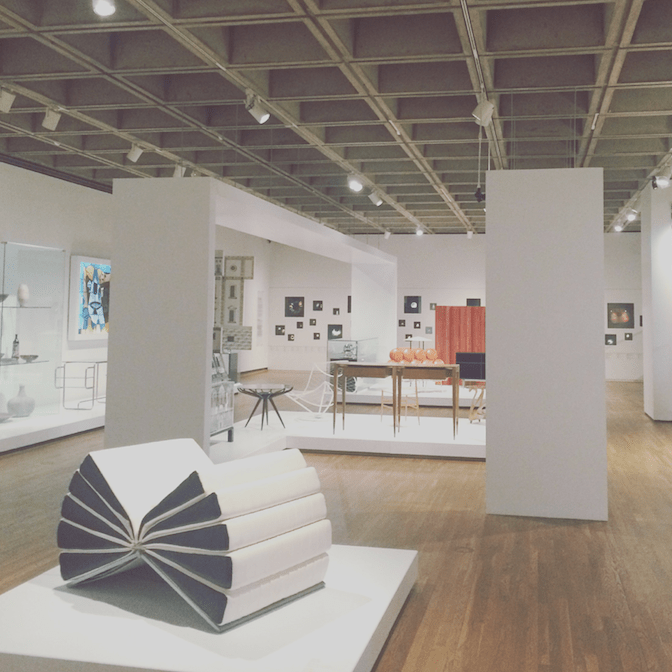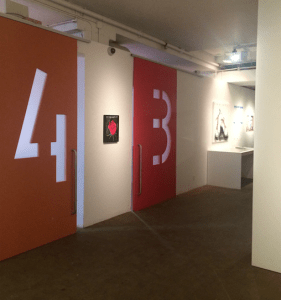
After completing my B.A. in art education, I did what many recent graduates do- I explored. I felt the need to keep learning, so I stepped outside the cinderblock walls of public school and into the open, marble structure of the art museum. It was here that I discovered applications of art education in ways that I had never before experienced; students, adults, families… all were welcome. Realizing my practice could be applied both inside and outside the classroom, I returned to graduate school with my mind full of possibilities.
Back in school, I attended a presentation by Marilyn Lajeunesse of the Montreal Museum of Fine Art (MMFA). Lajeunesse spoke of an initiative called “Sharing the Museum,” which has been operating for the past fifteen years. This initiative:
Provides a free educational experience to community organizations working with people who would not otherwise be able to visit the Museum… These partner organizations work with cultural communities, senior citizens, youth at risk, residents of underprivileged neighbourhoods [sic], low-income families, and people with physical or intellectual disabilities. (Montreal Museum of Fine Arts, 2015)
Long after the presentation ended, the idea of providing art education access to people from all walks of life stuck with me. Within a month, I was engaged in dialogue with Lajeunesse, and drawing upon my past experiences both in museum and classroom education, I dove into this topic and discovered my graduate thesis.
MMFA: “Sharing the Museum” Observations
Packing my warmest winter parka, I flew to Montreal and spent the month of March 2016 engrossed in the day-to-day happenings at the MMFA. I had always been interested in the wide audience that is reached by a museum, but I could not have even imagined the scope of inclusion in practice at the MMFA. Each day was filled with programming specifically created for a variety of groups: homeless populations, hospital patients, separate groups of youth and adults with mental illness, at-risk students, etc. Most program sessions included an art viewing and discussion component within the gallery, followed by art creation and discussion activities within the education studio space.
All of the programming under the MMFA’s “Sharing the Museum” initiative is created and designed by teams of various museum educators, staff, program administrators, and/or any others according to need. Through literature analysis, annual reports, and personal observation, I found three main aspects consistent with programming:
- Programs are designed to “…destigmatize and help [participants] integrate into a social group” and “allow participants to surpass feelings of isolation” (2014-2015 Report, p. 3): Both the L’Espace Transition and Douglas Hospital programs, especially, encourage constant teamwork and collaboration among participants. Many of the patient participants have been hospitalized and/or isolated during treatment, so working with peers in a safe environment gives an opportunity to exercise social skills and build relationships. Programming with the Alzheimer’s Society includes caregivers and participants, providing opportunities to collaboratively create ideas, interpretations, and physical artworks. Including caregivers is especially important, as they can also experience feelings of isolation.
- Empower participants to use their own, unique voice to build personal identity: Within Bon Dieu dans la Rue and Accueil Bonneau—separate programs for homeless populations—hands-on learning experiences provide participants with alternate forms of communication. Those that may be unable to efficiently verbalize, or have low self-esteem, are able to communicate through gallery sketches, movement, and/or open discussion. I also found that participants across all programs were supported with opportunities to improve self-regard. After learning new art-making skills, some participants were more visibly confident, and during discussions, each contribution was affirmed so participants felt the worth of their opinions.
- Develop empathy, perspective, and open-mindedness within everyone: Programming with the Jewish General Hospital, especially, involves gallery visits and discussion in public galleries. During one of these sessions, I observed public visitors interacting with patient participants—leaning over to hear the educator speak (and becoming a part of the “group”, if only for a minute), sharing a smile or a laugh, or even engaging in conversations about artworks. Not only do these opportunities benefit participants, as previously discussed, but general society, as well.
MMFA: A Model for Future Programming:
Moving forward, the MMFA’s “Sharing the Museum” initiative can serve as a successful model for museum education. Considering the three main aspects above, museum educators can design programming that offers opportunities for the well-being of all people. We, as educators, are constantly considering inclusivity, diversity, and the good of all people—what better way to teach this than to actually practice it?
I openly invite everyone to contact me for more information—believe me, I have many pages of thesis to share! I also extend a call for more research on community programming and well-being within museum education, and I look forward to the future for all.
Bio: Christine Pace is currently an art teacher for grades 1-8 in Chicago, Illinois. Christine graduated with her Honors B.A. in Art Education in 2011 (Kent State University), and her M.A. in Art Education, with a focus on Museum Education, in 2016 (Kent State University). Christine continues to live her passion for art education through teaching, and would love to become more involved in museum education and/or community organizations. Please do not hesitate to reach out!








